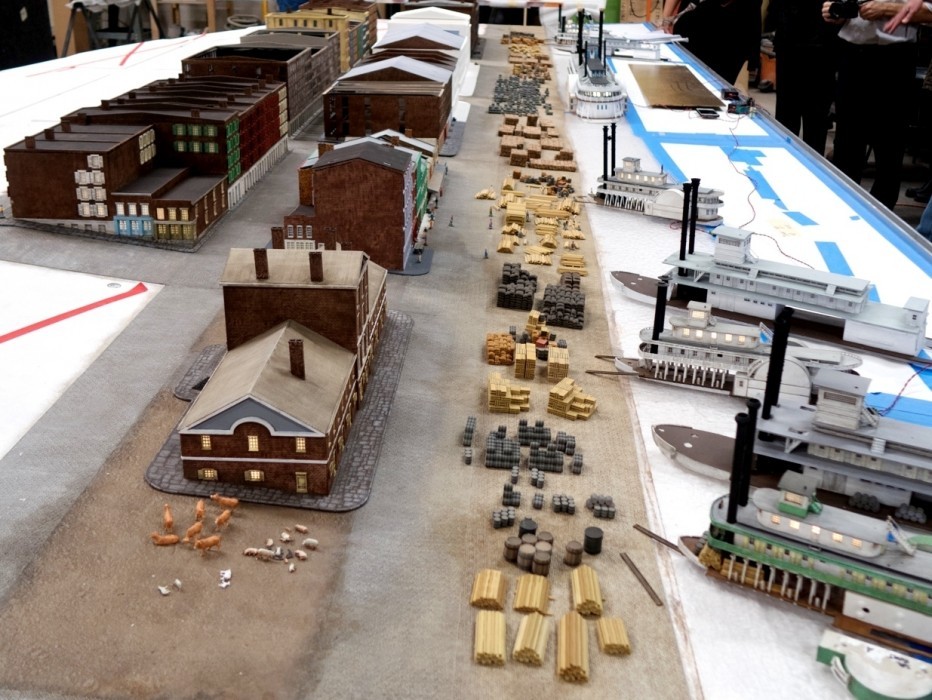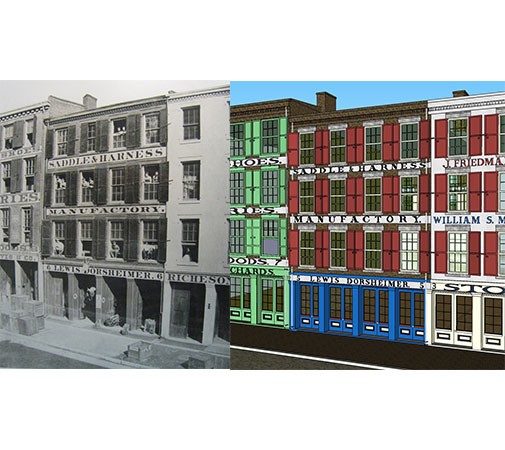Updates / Blog /


Updates / Blog /

St. Louis was the third busiest port in the United States during its 1840 to 1860 heyday. Steamboats waiting to load and unload their cargo lined up for a mile along the Mississippi River. At the new museum at the Arch, visitors will be able to view the St. Louis riverfront as it was in 1851 in spectacular detail. A diorama is under construction depicting buildings, people, livestock, cargo, and steamboats, allowing visitors to experience the historic riverfront era before the Gateway Arch.
Work for the model started with research. Bob Moore, historian at the Jefferson National Expansion Memorial, studied lithographs from the time period, fire insurance maps, and notes and photographs made for the National Park Service before the district’s clearance during the great depression. The result will be a richly detailed model accurately showing a five block portion the riverfront district as it was in 1851.

In Sketch Up, a 3D modeling software program, Moore went to work recreating the buildings. He created 70 individual buildings and 12 steamboats in meticulous detail. Now, the buildings are being 3D printed, assembled, and painted by model makers at Pacific Studios in Seattle – the exhibit production company for the museum. They are adding the people, the lighting, the goods and wagons on the levee – everything that will bring the model to life.
“Visitors will see a slice of the city,” Moore said. “We are really trying to show how busy it was here. All the boats docked here – from the Missouri, Upper Mississippi, Ohio, Illinois and Lower Mississippi – and transferred cargo. Imagine a major airport hub.”
Using city directories and photos from the time period, Moore was even able to identify the businesses occupying buildings. In the model, visitors will see the recreated business signs. They will also view architecture that was pioneering in the 1850’s. After the fire of 1849 and responding to a boom in riverfront trade, buildings on the riverfront were some of the first to use brick and cast iron for fire protection and structure. While other cities were building with timber, St. Louis used new technology at the time to build bigger and safer buildings.
The model is part of a new theme in the museum at the Arch focusing on St. Louis’ role in the westward expansion of the United States.
“We tried to blend the national story of westward expansion and also the importance of this place,” Moore said. “The area of the park – this small area influenced national expansion.” Visitors will be able to experience the model in the “Riverfront Era” exhibit when the new museum opens in July 2018.

Make a difference AND enjoy a delicious catered lunch with the best views in the country. Invite your family or friends to our spring fundraiser and get your tickets by May 31.
I'm ready to picnic!